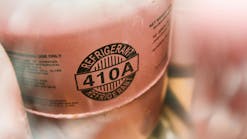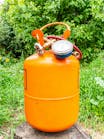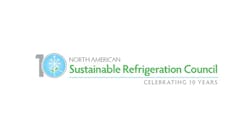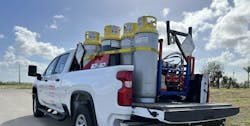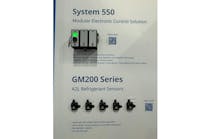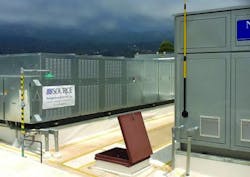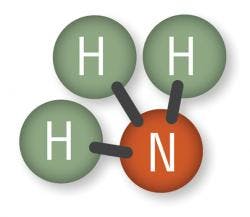The commercial refrigerant landscape is changing, so much so that some in the commercial refrigeration industry are looking at new ways to use ammonia (NH3) as a refrigerant.
The key to ammonia’s accepted use is that it be used in a safe, well-designed system. To be sure, safeguards exist. In the U.S., facilities containing 500 pounds (227 kg) of ammonia or more must be reported to the local emergency planning committees. Facility planners must also submit a risk management plan to the U.S. Environmental Protection Agency. For all ammonia refrigeration systems of any size charge, losses of more than 100 pounds of ammonia must be reported to the National Response Center within 15 minutes of the person in command of the facility being made aware of the loss.
An Albertsons store in Carpenteria, CA, has been something of a model for the ideal ammonia supermarket application. The store was remodeled in 2013, and expanded from 20,000 to 40,000 sq.ft. It had been using R-22 refrigerant in a conventional direct expansion (DX) refrigeration system. The new system uses ammonia as the primary refrigerant, combined with carbon dioxide (CO2) for medium-temperature cases, and a combined cascade/DX system for low-temperature cases. Richard Heath, senior manager, technology integration for Supervalu (Albertsons’ parent company), provided details in articles appearing in Supermarket News and ContractingBusiness.com magazines. Find them at bit.ly/SNAmmonia and bit.ly/AlbertsonStoreCB.
• The Albertson’s refrigeration system is an ammonia/CO2 cascade system. Refrigeration inside the store is CO2; ammonia never enters the store. The small charge ammonia system (approx. 350 pounds) is located on the roof of the store in a weather tight enclosure.
• The ammonia system is used to condense the CO2. The liquid CO2 is pumped around the store to all the refrigerated fixtures. Customers and store associates are never exposed to ammonia.
• The system reliefs and exhaust system are located close to an evaporative-forced air fluid cooler; any ammonia that might leak from the system will be entrained in this moist air and forced upward. The ammonia is used to remove heat from the CO2 refrigeration system that’s used to distribute the “cold” to all the display cases and other refrigerated loads in the store.
Zach Logan, senior vice president, American International Refrigeration, a Mufreesboro, TN-based provider of design, engineering, installation, and products for industrial ammonia refrigeration, said the perception of safety by community leaders will be a key factor in whether or not ammonia systems expand into new commercial uses.
“Are (installers) doing what’s necessary for these systems to be safe? Logan asks. “That’s what’s going to be on the minds of community leaders. In my opinion, supermarkets are measuring public reaction. If there were significant pushback, the International Institute of Ammonia Refrigeration (IIAR) and Refrigerating Engineers Technical Association (RETA) would be most suited to inform or educate the public on the responsibilities and environmental benefits it will provide to the community. I anticipate ammonia becoming an easier sell, as long as the safety procedures are communicated,” he said.
Ammonia Q&A With Rajan Rajendran
applications.Q: Is there a learning curve that would make ammonia more difficult to adopt among technicians who are used to HCFC refrigerants? A: There is undoubtedly a learning curve in the adoption of ammonia in a commercial setting. As mentioned earlier, ammonia is currently classified as a B2 refrigerant by ASHRAE. The HCFC and HFC refrigerants in common use today are all A1 — non-toxic and non-flammable. The commercial refrigeration industry is just beginning to tackle the training for service of flammable refrigerants like propane. The industrial sector has well established training and certification procedures for handling ammonia as a refrigerant; commercial applications could learn from this.

